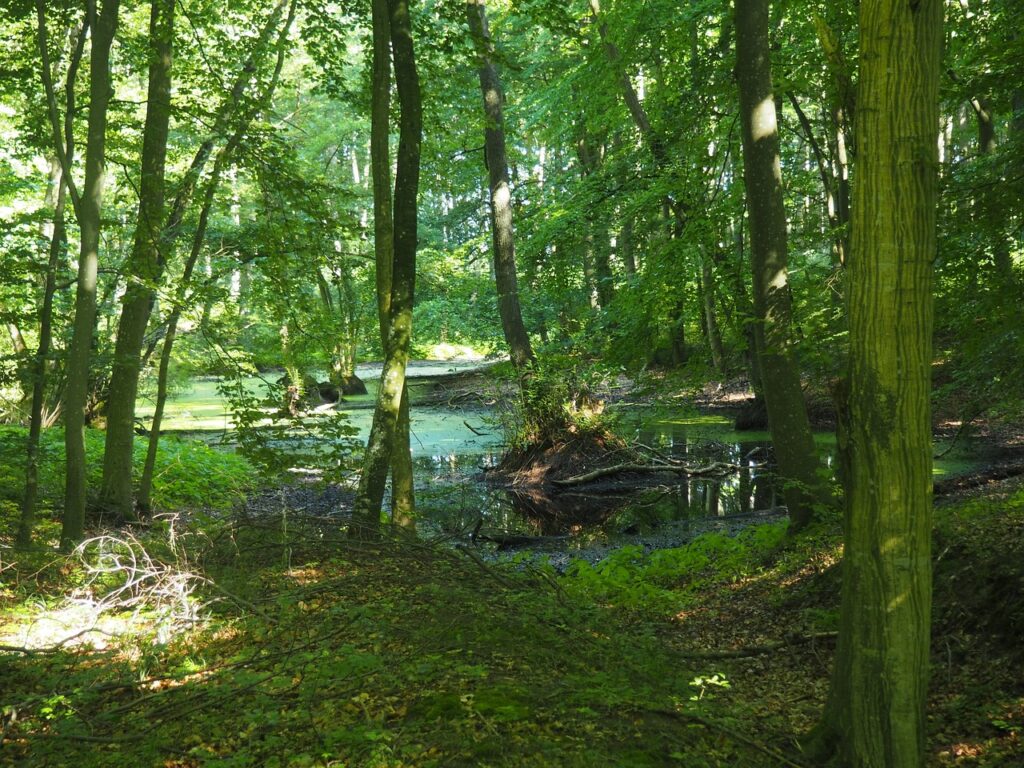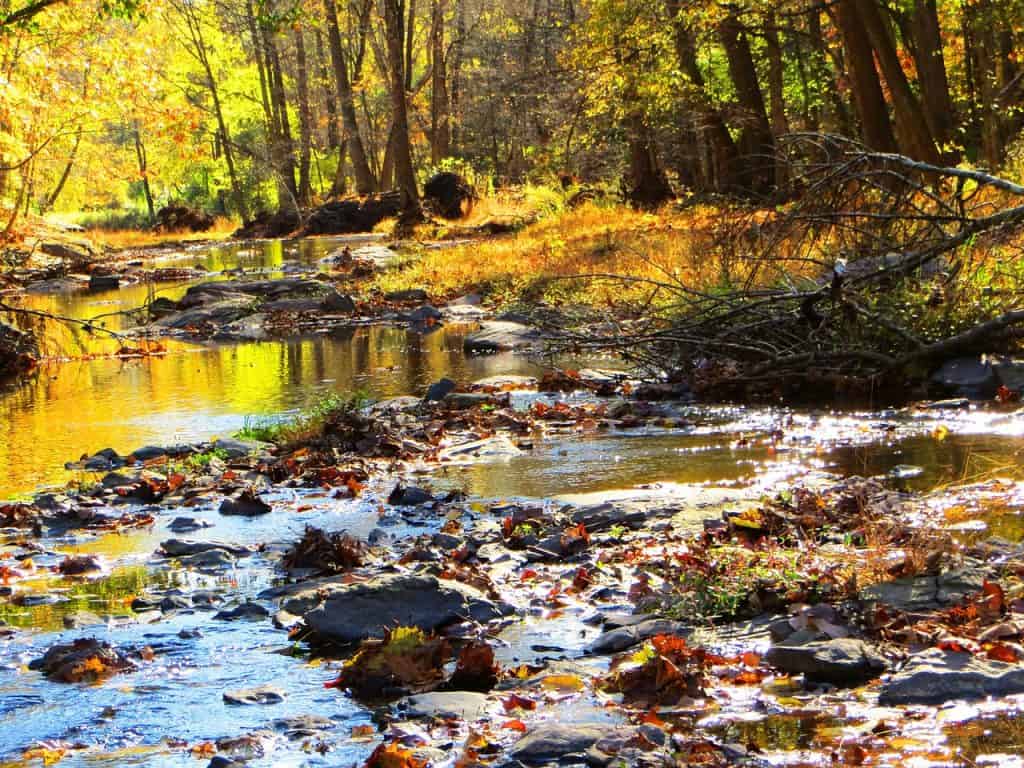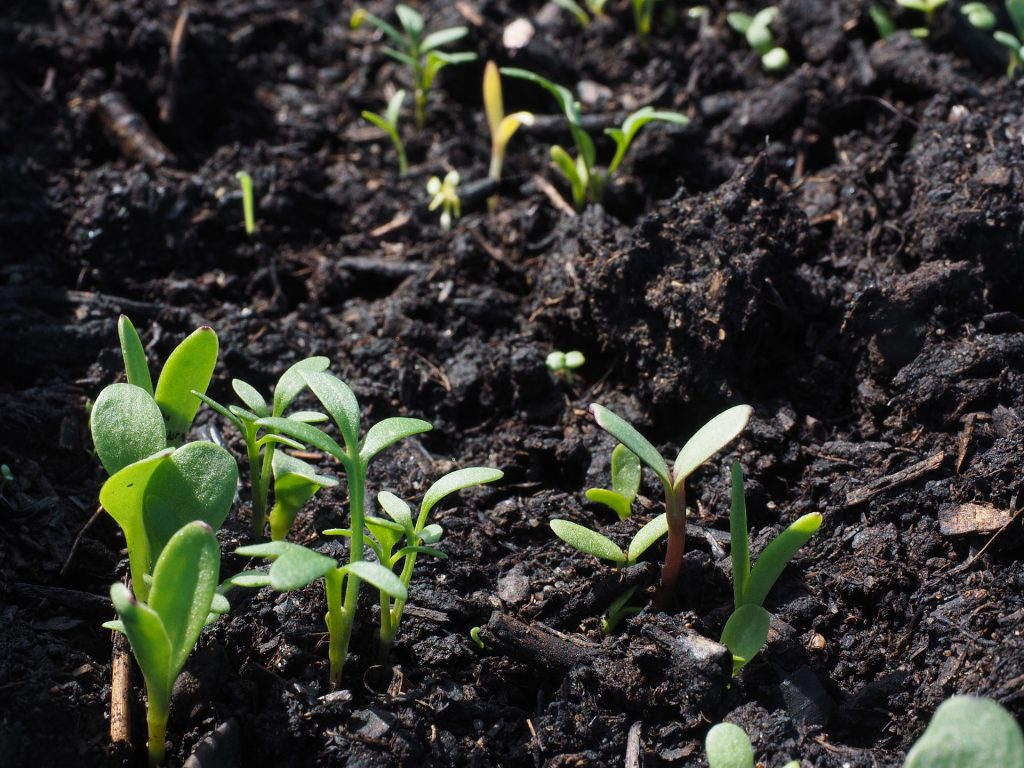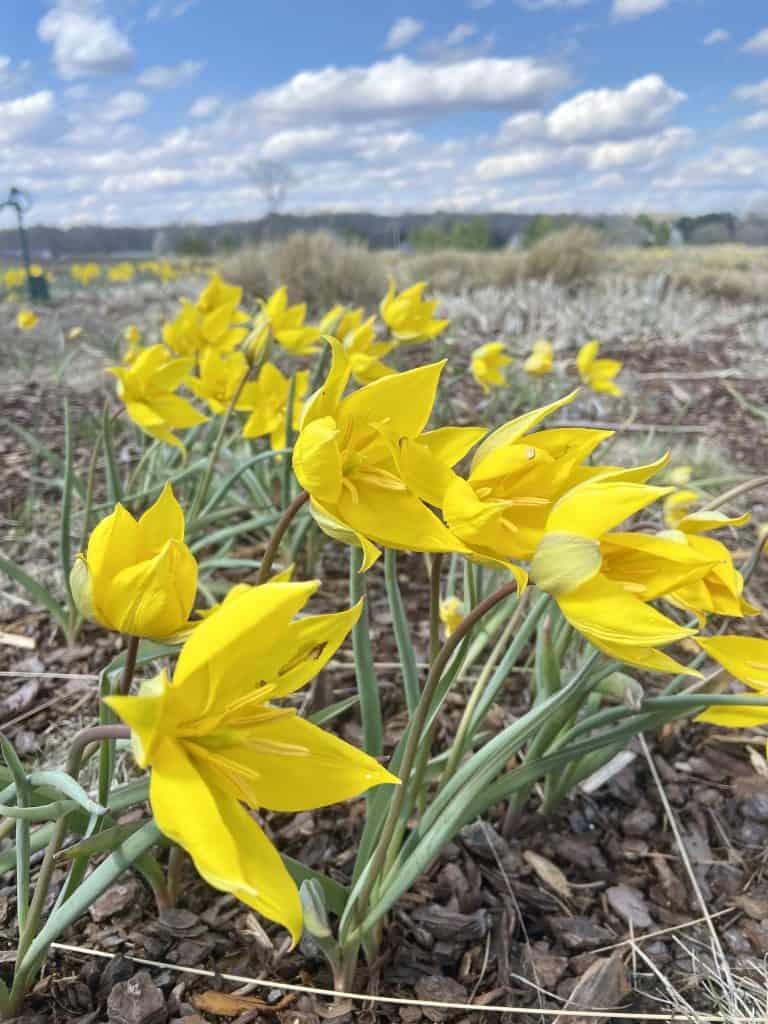Shinrin-Yoku: Ancient Origins, Contemporary Relevance in a Modern Age.
Forest bathing, known as “Shinrin-yoku” in Japanese, originated in Japan in the early 1980s as a response to the increasing stress levels and health problems associated with urbanization and modern lifestyles. The term was coined by Tomohide Akiyama, the director of the Japanese Ministry of Agriculture, Forestry, and Fisheries, in 1982.
The concept is deeply rooted in Japan’s cultural and spiritual connection to nature, which can be traced back to ancient practices such as Shintoism and Buddhism that emphasize the importance of living harmoniously with the natural world. Forest bathing was developed as a form of preventive healthcare, encouraging people to immerse themselves in natural environments to reduce stress, improve mood, and enhance overall well-being.
The practice involves taking slow, mindful walks through forests or other natural areas, focusing on the sensory experience of being in nature—sights, sounds, smells, and touch—rather than on physical exercise. Scientific research has since supported the benefits of forest bathing, showing that it can lower blood pressure, reduce cortisol levels (a stress hormone), boost the immune system, and increase feelings of calm and clarity.
Forest bathing has since gained popularity worldwide, with many countries adopting similar practices to promote mental and physical health through nature immersion.
The History of Sylvotherapy:
Shinrin-Yoku, or forest bathing, is rooted in ancient practices that recognized the healing power of nature. The concept aligns closely with sylvotherapy, the practice of using forests for therapeutic purposes, which dates back centuries. In many cultures, nature has long been seen as a source of healing, with forest environments specifically regarded as places of refuge and restoration. Ancient practices in Japan, such as Shintoism and Buddhism, emphasized harmony with nature, setting the stage for Shinrin-Yoku’s development in the 1980s as a modern interpretation of these age-old beliefs.



The Role of Nature in Modern Society:
Discover the Power of Forest Bathing!
Feeling stressed? It might be time to try forest bathing. This ancient practice of immersing yourself in nature offers incredible benefits for your mind and body. Learn how a simple walk in the woods can transform your well-being.
In today’s fast-paced, technology-driven world, the role of nature has become increasingly significant as a counterbalance to the stresses of modern life. Urbanization has distanced many people from natural environments, contributing to a rise in mental health issues and chronic stress. Shinrin-Yoku serves as a reminder of nature’s essential role in maintaining mental and physical health. By encouraging individuals to reconnect with the natural world, it offers a simple yet powerful way to alleviate stress, foster mindfulness, and enhance overall well-being.
Enhancing Physical Well-Being in Natural Settings:
Numerous studies have shown that spending time in natural settings can significantly enhance physical health. Forest bathing, in particular, has been found to lower blood pressure, reduce cortisol levels, and improve immune function. The practice emphasizes the importance of being present in nature, allowing the body to relax and rejuvenate. The sights, sounds, and smells of the forest engage the senses and contribute to a state of relaxation, which has tangible benefits for physical health. By immersing oneself in a natural environment, the body can recover from the strains of daily life and promote long-term health.

The Wisdom of Nature:
Nature has long been regarded as a teacher, offering wisdom through its cycles, diversity, and resilience. Shinrin-Yoku taps into this ancient wisdom, inviting individuals to learn from nature’s rhythms and balance. The practice encourages a deep, mindful connection with the environment, fostering an understanding of the interdependence between humans and nature. By observing the intricacies of natural ecosystems, individuals can gain insights into their own lives, learning patience, adaptability, and the importance of balance. Nature’s wisdom is accessible to all who take the time to listen and observe.
Nature is Accessible to Everyone:
One of the key strengths of Shinrin-Yoku is its accessibility. Unlike many wellness practices that require specialized equipment or locations, forest bathing can be done by anyone, anywhere there is access to a natural setting. Whether in a dense forest, a local park, or even a backyard, the practice encourages people to engage with whatever nature is available to them. This inclusivity makes Shinrin-Yoku an ideal practice for people of all ages, backgrounds, and abilities, reinforcing the idea that nature’s benefits are universally available.
Understanding the Difference Between Forest Bathing and Forest Therapy:
While often used interchangeably, forest bathing and forest therapy are distinct practices. Forest bathing, or Shinrin-Yoku, refers to the mindful immersion in nature, focusing on the sensory experience and personal well-being. It is a self-directed practice that can be done independently. Forest therapy, on the other hand, is a more structured form of nature immersion, often guided by a trained therapist or practitioner. It involves specific therapeutic techniques aimed at addressing particular physical or psychological issues.
Forest therapy sessions may include guided meditations, mindfulness exercises, and discussions, making it a more targeted approach to healing in nature. Both practices share the same underlying principle of connecting with nature for health benefits but differ in their structure and intent.
Notice What You Are Noticing – A Technique in Mindfulness:
The “notice what you are noticing” technique is a mindful practice that encourages a deep awareness of the present moment, often used in forest bathing and other mindfulness exercises. Here’s how the technique works and its connection to forest bathing:
Understanding the Technique:
1. Pause and Observe:
• Begin by pausing wherever you are, whether in a forest, garden, or any natural setting.
• Take a moment to ground yourself, focusing on your breath to center your awareness.
2. Awareness of Sensations:
• Slowly bring your attention to your senses—sight, sound, smell, touch, and even taste.
• Notice the sensations you’re experiencing without judgment. For example, observe the feeling of the ground beneath your feet, the sound of leaves rustling, or the scent of pine in the air.
3. Notice Your Thoughts:
• As you tune into your surroundings, notice your thoughts as they arise. Are you thinking about your to-do list, or are you genuinely immersed in the present?
• Acknowledge these thoughts without getting attached to them. Let them pass, like leaves floating down a stream.
4. Deepen Your Observation:
• Go beyond just noticing and start to pay attention to the subtleties in your environment. What colors do you see? How does the air feel against your skin? Are there patterns in the bark of the trees?
• This deep observation enhances your connection to the natural world and brings a sense of calm and clarity.
5. Reflect on the Experience:
• After spending time noticing, take a moment to reflect on the experience. How did your body feel? Did your mind quiet down? What did you discover about your surroundings or yourself?
Connection to Forest Bathing:
In the context of forest bathing, “noticing what you are noticing” is a way to fully engage with the environment. Forest bathing, or Shinrin-Yoku, is about immersing oneself in the forest atmosphere, allowing nature to impact you deeply. This mindfulness technique helps:
• Enhance Sensory Awareness: By focusing on what you are noticing, you become more attuned to the sensory inputs from nature, such as the sound of a distant bird or the texture of moss on a tree.
• Deepen Connection with Nature: It encourages you to build a relationship with the natural world, noticing how each element of the forest contributes to your overall experience.
• Promote Mental Clarity and Calm: As you focus on the present moment, you may find that your thoughts slow down, bringing a sense of peace and mental clarity.
• Facilitate Emotional Healing: By observing your emotions and thoughts without judgment, this technique can help you process feelings in a natural and supportive environment.
In summary, “noticing what you are noticing” in forest bathing allows you to be fully present, fostering a deeper connection to nature and enhancing the therapeutic benefits of the practice.
References and Research Papers.
Books:
1. “Forest Bathing: How Trees Can Help You Find Health and Happiness” by Dr. Qing Li
• A comprehensive guide by one of the leading researchers in the field of forest medicine, exploring the science and benefits of forest bathing.
2. “The Nature Fix: Why Nature Makes Us Happier, Healthier, and More Creative” by Florence Williams
• This book examines the effects of nature on human health and well-being, including a focus on forest bathing.
• A deep dive into how nature, including forest environments, impacts the brain and overall health.
Research Papers:
1. Li, Q. (2010). “Effect of forest bathing trips on human immune function.” Environmental Health and Preventive Medicine, 15(1), 9-17.
• A study highlighting how spending time in forests can boost immune function, with evidence showing increased natural killer cell activity.
2. Park, B. J., Tsunetsugu, Y., Kasetani, T., Morikawa, T., Kagawa, T., & Miyazaki, Y. (2010). “The physiological effects of Shinrin-yoku (taking in the forest atmosphere or forest bathing): evidence from field experiments in 24 forests across Japan.” Environmental Health and Preventive Medicine, 15(1), 18-26.
• This research explores the physiological benefits of forest bathing, such as reduced blood pressure and heart rate.
3. Hansen, M. M., Jones, R., & Tocchini, K. (2017). “Shinrin-Yoku (forest bathing) and nature therapy: A state-of-the-art review.” International Journal of Environmental Research and Public Health, 14(8), 851.
• A comprehensive review of the current research on forest bathing and nature therapy, summarizing the benefits and mechanisms behind the practice.
4. Li, Q., Kobayashi, M., Inagaki, H., Hirata, Y., Li, Y. J., Hirata, K., … & Wakayama, Y. (2016). “Forest bathing enhances human natural killer activity and expression of anti-cancer proteins.” International Journal of Immunopathology and Pharmacology, 29(3), 560-570.
• This paper presents findings on how forest bathing can enhance immune function, specifically in the context of cancer prevention.
5. Song, C., Ikei, H., Kobayashi, M., & Miyazaki, Y. (2016). “Effects of viewing forest landscape on middle-aged hypertensive men.” Urban Forestry & Urban Greening, 17, 1-5.
• The study examines how simply viewing a forest landscape can reduce stress and lower blood pressure, especially in individuals with hypertension.
6. Ochiai, H., Ikei, H., Song, C., Kobayashi, M., Takamatsu, A., Miura, T., & Miyazaki, Y. (2015). “Physiological and psychological effects of a forest therapy program on middle-aged females.” International Journal of Environmental Research and Public Health, 12(12), 15222-15232.
• Focuses on the psychological and physiological impacts of forest therapy on middle-aged women, emphasizing stress reduction and mood enhancement.
7. Kjellgren, A., & Buhrkall, H. (2010). “A comparison of the restorative effect of a natural environment with a simulated natural environment.” Journal of Environmental Psychology, 30(4), 464-472.
• This paper compares the restorative effects of actual natural environments, including forests, with simulated environments, shedding light on the unique benefits of real nature experiences.
8. Mao, G. X., Lan, X. G., Cao, Y. B., Chen, Z. M., He, Z. H., Lv, Y. D., … & Wang, G. F. (2012). “Effects of short-term forest bathing on human health in a broad-leaved evergreen forest in Zhejiang Province, China.” Biomedical and Environmental Sciences, 25(3), 317-324.
• Investigates the short-term health benefits of forest bathing in a specific type of forest, contributing to a broader understanding of how different forest environments impact health.
Articles:
1. Williams, F. (2012). “Take Two Hours of Pine Forest and Call Me in the Morning.” Outside Magazine.
• An article exploring the rise of forest bathing in the West, its origins in Japan, and its growing popularity as a wellness practice.
2. Kuo, F. E., & Taylor, A. F. (2004). “A potential natural treatment for attention-deficit/hyperactivity disorder: evidence from a national study.” American Journal of Public Health, 94(9), 1580-1586.
• Discusses how exposure to natural environments, including forests, may be an effective treatment for ADHD in children.
3. Selhub, E. M., & Logan, A. C. (2012). “Neurofrontiers: How nature experiences reduce stress, improve mental health, and make us happier.” Harvard Health Blog.
• A blog post summarizing the mental health benefits of spending time in nature, with a focus on stress reduction and improved mood.
This list provides a solid foundation for understanding the various benefits of forest bathing, backed by scientific research and expert insights.


